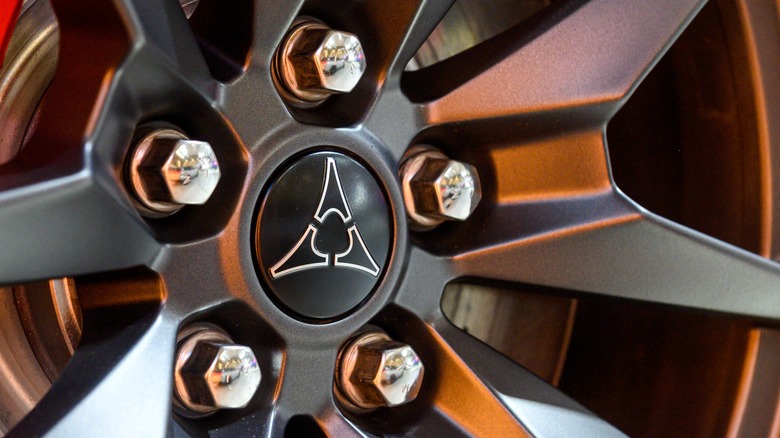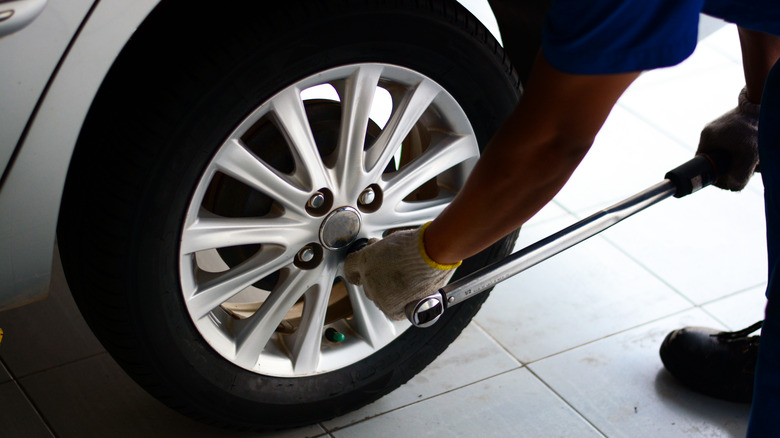How To Properly Torque Your Lug Nuts (And How Tight They Should Be)
In order to support something as heavy and fast-moving as an automobile, car wheels — from the best to the worst brands — need to be sturdy and secure. An essential element to achieve this are the lug nuts, the strong metallic fasteners near the wheel's center that keep it fastened to the hub. It's easy to take your lug nuts and their vital function for granted until you have to interact with them. If you're fixing a flat tire at home or on the road, you'll need to remove and replace the lug nuts.
This may not seem all that tough a task, but failing to properly tighten your lug nuts is one of the most common mistakes made when changing tires. Having your lug nuts torqued too low or unevenly can result in the wheel falling off, while tightening them too much can damage the wheel, studs, or hub. Additionally, tightening your lug nuts without using the proper equipment or exercising safety procedures before, during, and after the wheels are swapped can be disastrous for you and your car.
The tools you have and how you use them will determine the strength and accuracy of the torque applied, and properly securing lug nuts is a task that requires careful attention and technique. You'll need a lug wrench or breaker bar to loosen the nuts and a torque wrench to tighten them. It's fine to use an impact wrench to remove the lug nuts, but fastening them with air or power tools can lead to uneven torque or damage to components. You'll also need a jack and jack stands to lift your car and a cloth or shop towels for cleanup.
How to torque your lug nuts
Park on level ground, set the emergency brake, and chock the wheels.
- Loosen the lug nuts about a half turn each, but don't remove them. Move in a star pattern, starting from the top, then going to the bottom right, up to the left, and so forth.
- Jack up the car until the wheel is about an inch off the ground and secure it with a jack stand.
- Remove the lug nuts and place them to the side.
- Take the wheel off the studs and lay it on the ground.
- Use the cloth or towels to wipe the hub, studs, and inside of the wheel, removing any debris or residue that's accumulated.
- Lift the new wheel onto the studs and screw on the lug nuts by hand until they're secure enough to stay in place.
- Tighten them to specifications with your torque wrench, once again using a star pattern. Passenger cars typically require a torque of between 70 to 150 foot-pounds, but your owner's manual or dealership service department can tell you the spec for your car.
- Lower the car from the jack stand and re-tighten each lug nut to the manufacturer's specifications with all the car's weight on the ground.
- Re-torque the lug nuts after the first 50 to 100 miles of driving.
- Lug nuts and wheel studs are prone to wear and tear and rust damage. Stay on top of their condition by re-torquing the lug nuts every 5,000 miles or whenever service requires the wheels to be removed.

